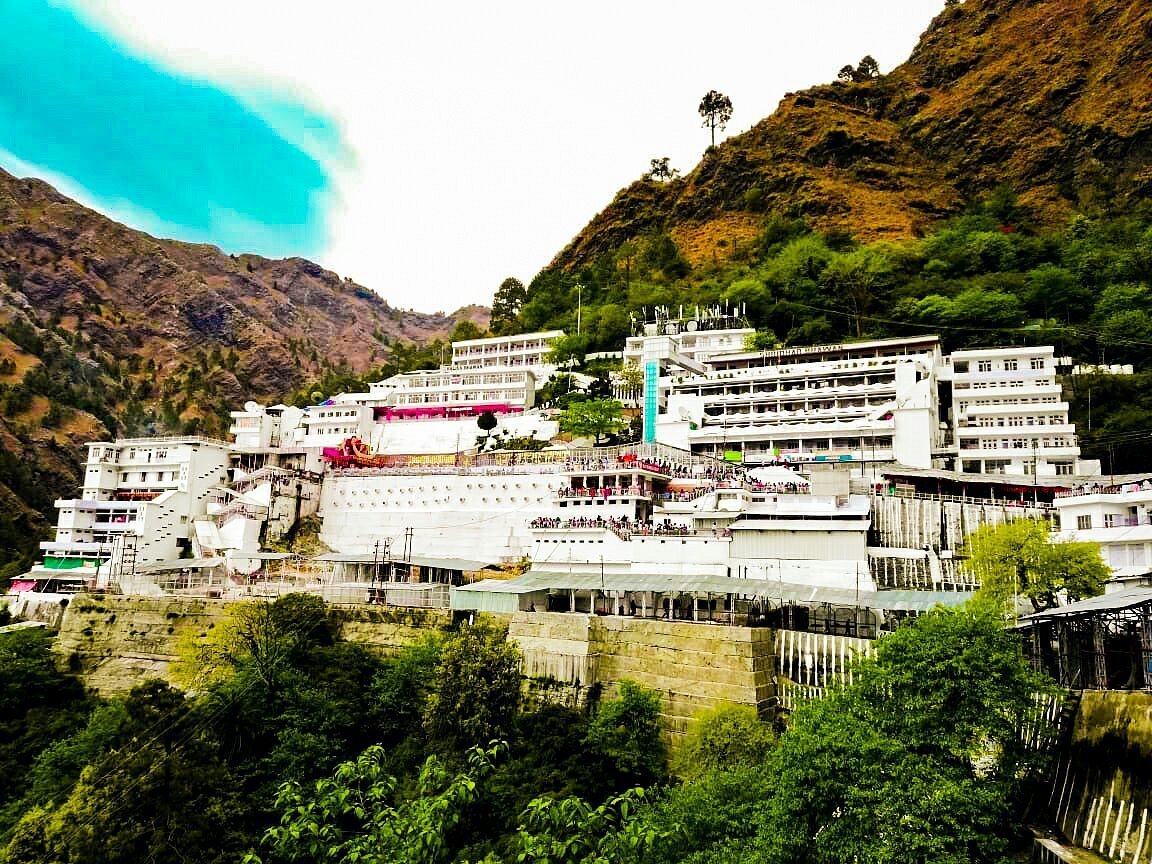Top 16 Places to visit in Vaishno Devi: Vaishno Devi is a beautiful place to visit for mental peace and a heritage atmosphere.
Places to visit in Vaishno Devi
1. Vaishno Devi Mandir – Best Religious Tourist Attractions in Vaishno Devi
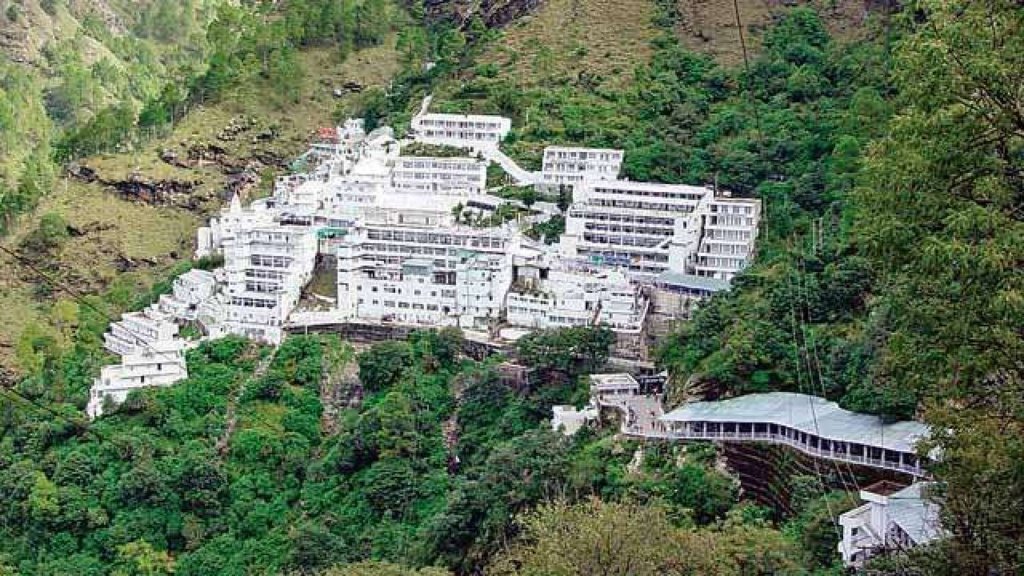
Vaishno Dev Mandir is India’s second most popular temple and best Places to visit in Vaishno Devi. The temple is dedicated to Vaishno Devi, a Hindu manifestation of the Goddess Durga. It is one of the must-visit vaishno devi tourist places.
With its holy shrine, it is a popular tourist place near vaishno devi for Hindus. It is believed that the Goddess comes to visit every year at aarti and poojas. This temple has beautiful places to be visited by friends and family. Vaishno Devi is one of the most notable places to explore newlywed couples and tourists who are looking for adventurous outdoor sports.
Because of the beautiful weather and the diverse climat in Vaishno Devi, it is best to visit during any season. In particular, you will enjoy exploring the stunning, natural beauty and taking part in various water activities when visiting as well.
- Timing to explore : All the day
- Distance : 1km from city center
2. Ardhkuwari
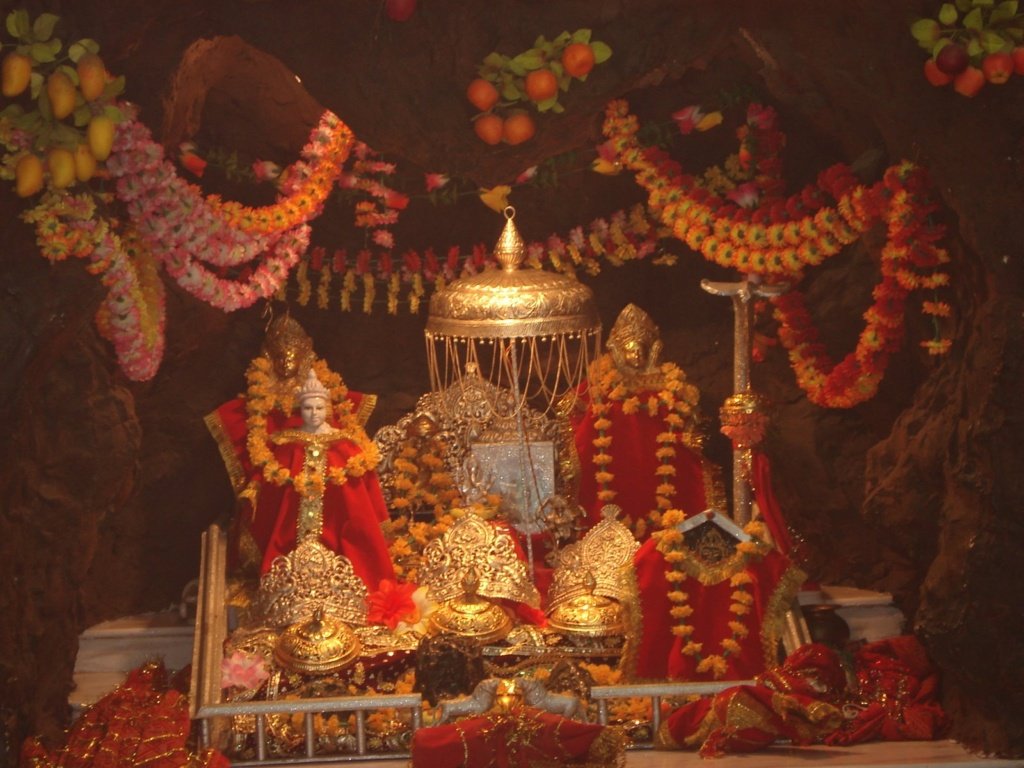
Ardhkuwari is one of the places to visit in vaishno devi. It is located closer to the city center and it is easy to get to year-round. With its importance and accessibility, ardh kuwari cave has been a popular destination and site throughout history.
One of the most visited and popular religious places to visit in jammu near vaishno devi Wolf’s cave is 52 feet long and needs to be crawled to reach the innermost part. Here you will see a large shrine built dedicated to the three Goddesses – Maha Saraswati, Maha Kali, and Maha Laxmi. Winter is best for visiting Vaishno Devi hill and taking exploring and an unforgettable journey on their holy cave path.
- Timing to explore : All the day
- Distance : 6kms from Vaishno Devi
3. Katra
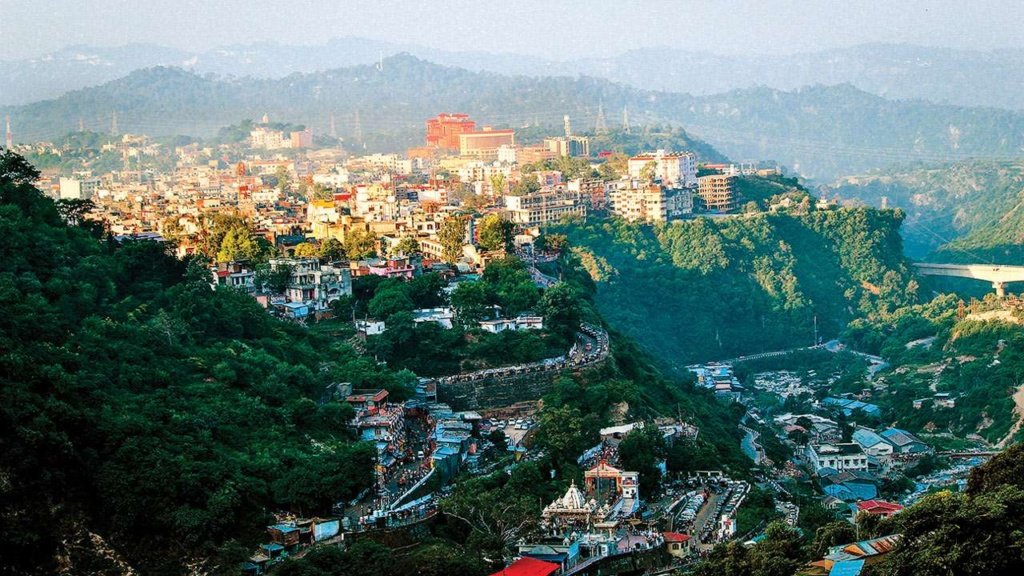
Katra is one of the finest tourist and religious places to visit near vaishno devi. This small town sits next to the foothills of the Trikuta Mountains and is also considered a gateway to the shrine. It’s a popular base camp for exploring the shrine as well. So even if you are not visiting, it is worth spending some time here.
Karta Vaishno Devi is famous for the area’s attractions such as the huge mountain climbing peaks, the Chenab River, and Banganga, which offer diverse opportunities for family outings. One of the best things to do in vaishno devi in Karta Vaishno Devi is the Vaishno Devi Temple. As this location is growing in popularity, visitors to this city now have access to helicopters and even eco-friendly vehicles.
This destination has accommodations and restaurants for people of all budgets. The best time to visit Katra is between March to October because the weather remains pleasant. However, if you like snow and are not worried about winter chill, you should plan your trip between March to October.
- Timing to explore : Daytime
- Distance : 667kms from Vaishno Devi and 5km from city center
4. Bagh-E-Bahu
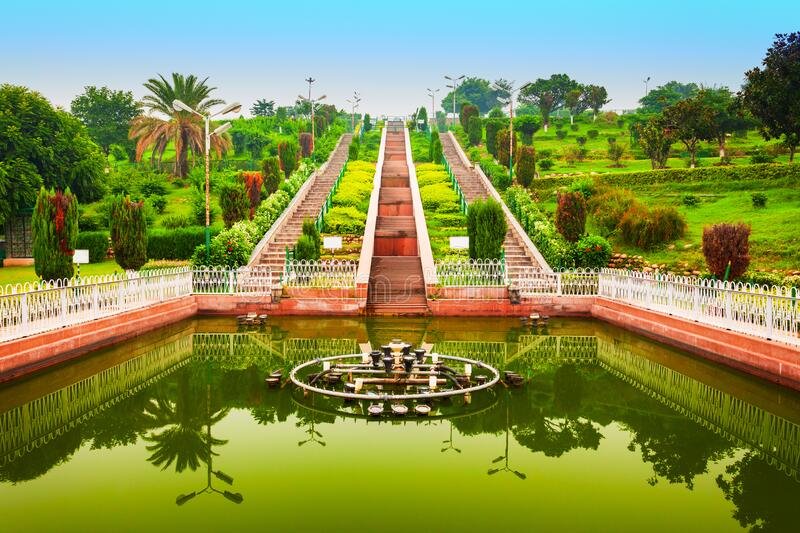
You won’t complete your trip to this region without exploring the renowned historical site— Bagh-E-Bahu. One of the vaishno devi famous things in this area, this garden is also beautiful and popular.
This fort houses the most spectacular light and sound show in India. It is open to local people and tourist alike. Visitors find very interesting to explore it because of its beauty, and is home to the largest underground aquarium in India.
It is shaped like fish, with 13 small caves for freshwater and 24 aquarium for marine fish. The entire garden blends the elements of greenery, earth, and water. Thus, it becomes one of the prime tourist place near vaishno devi.
- Timing to explore : 6 AM – 8 AM
- Distance : 64kms from Vaishno Devi
5. Vaishno Devi Yatra
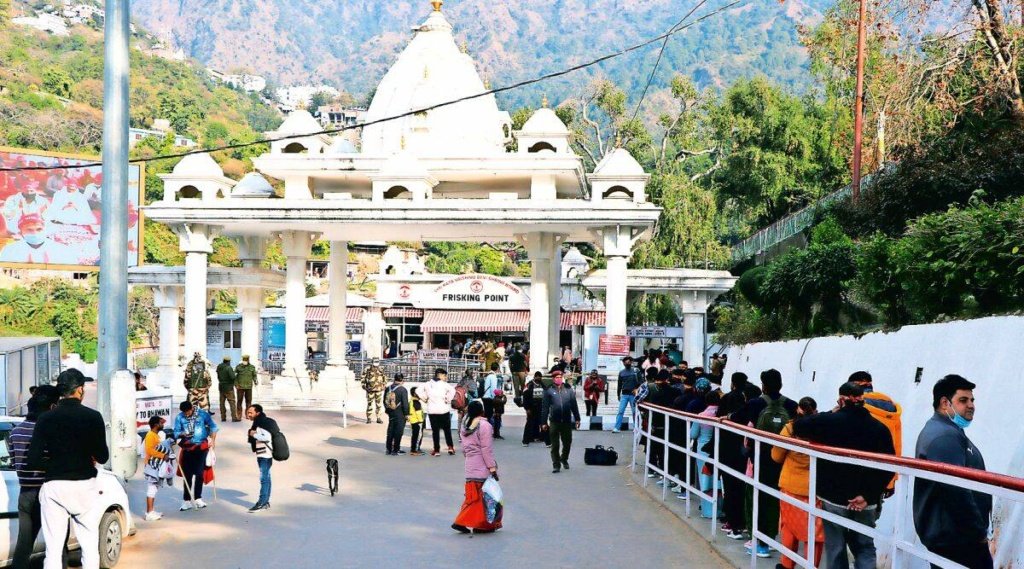
From Katra, the most popular yatra to Vaishno Devi is one that passes by the town of Banganga and ends at one of its holy sites, the Holy Cave.
There are many options to get to Vaishno Devi. Palki, pithoo, pony, or even walking is possible. If you want to save the money on the helicopter and ropeway trips, check out their timing.
Visitors to Vaishno Devi can easily access the tickets for their ropeway ride, which is available at the Bhawan station. The best time to visit is throughout the year, but during festivities like Durga Puja the area becomes lively as people from different religions congregate.
Consider booking your journey before travel if you want to be sure that the pilgrimage is still open.
- Timing to explore : All the day
- Distance : 13km from Vaishno Devi
6. Bhairavnath temple
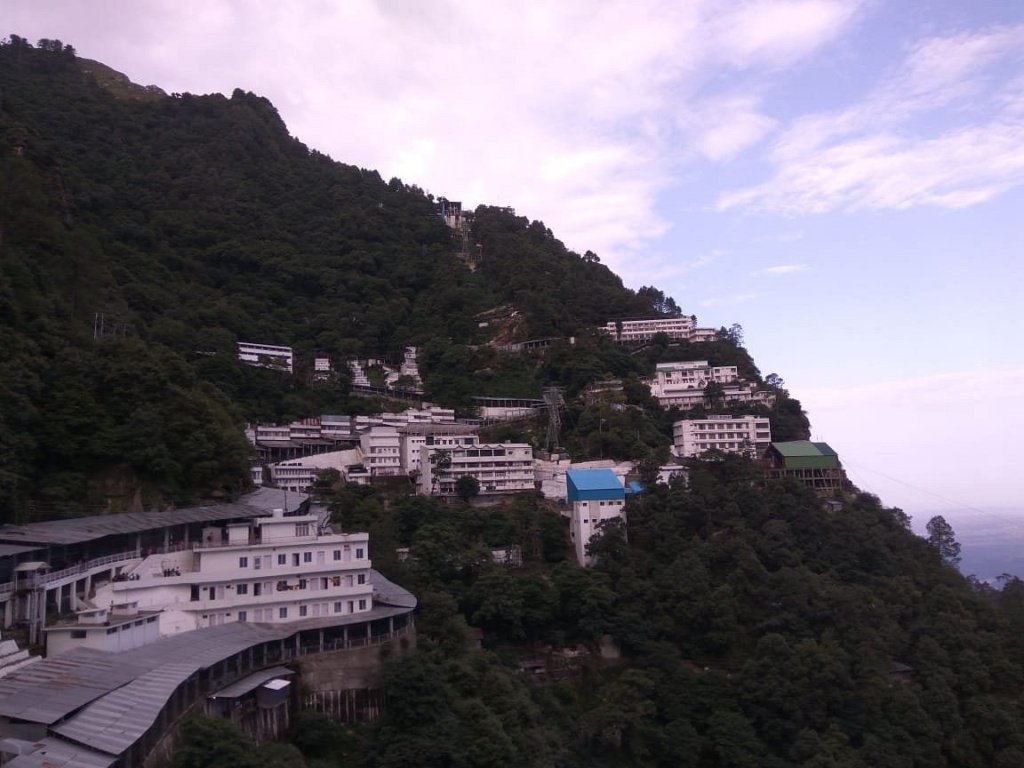
Bhairavnath temple is another shrine near the popular Vaishno temple. The cave temple is dedicated to the saint, and can be visited in around 4 hours. You cannot visit this place without visiting Vaishno Devi because it is one of the best places to visit while on your pilgrimage trip.
The steep 3km journey from the Bhawan makes you reach this religious site. Among Vaishno Devi’s religious sites, this one offers breath-taking views of the forest-fed mountains. You can reach the entrance on foot, where ponies are kept for reaching up and down without the need of stairs, or by using a ropeway from Vaishno Devi temple to this side.
- Timing to explore : All the day
- Distance : Few kilom eters from Vaishno Devi temple
7. Dera Baba Banda
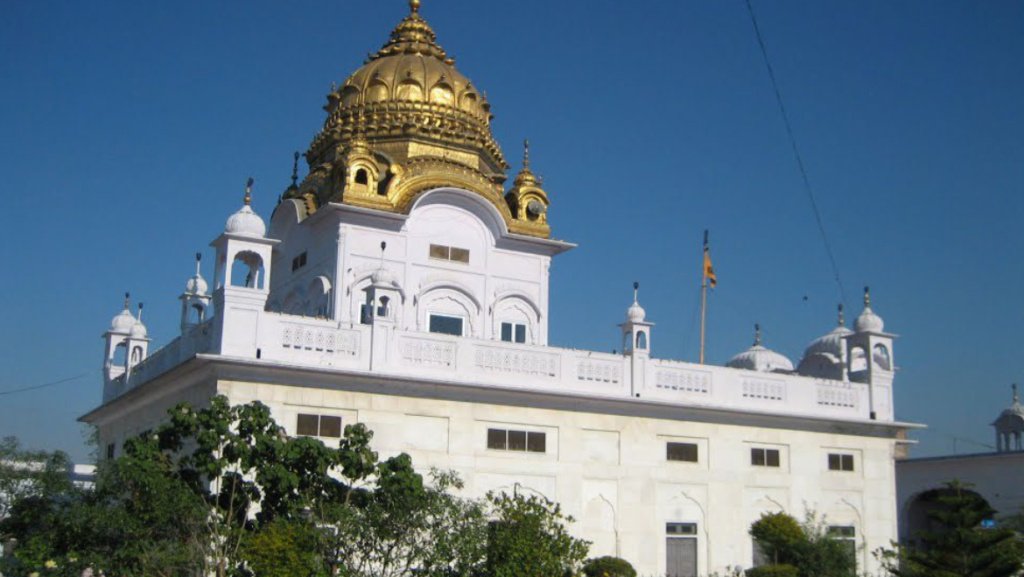
It is one of the important religious places to visit near vaishno devi. The Gurudwara is 300 years old, has served as a principle pilgrimage point for Sikhs, houses the ashes of Baba Banda Bahadur, who was the Guru Gobind Singh army’s commanding solider as well as his huge sword and arrow.
The Vaishno Devi temple attracts many pilgrims, especially during the annual three-day Vaisakhi festival. Among the many famous attractions in the city, it stands out because it helps tourists to learn about and tour nearby museums.
- Timing to explore : 5 AM – 12 PM and 4 PM – 9 PM
- Distance : 15km from city center
8. City Center
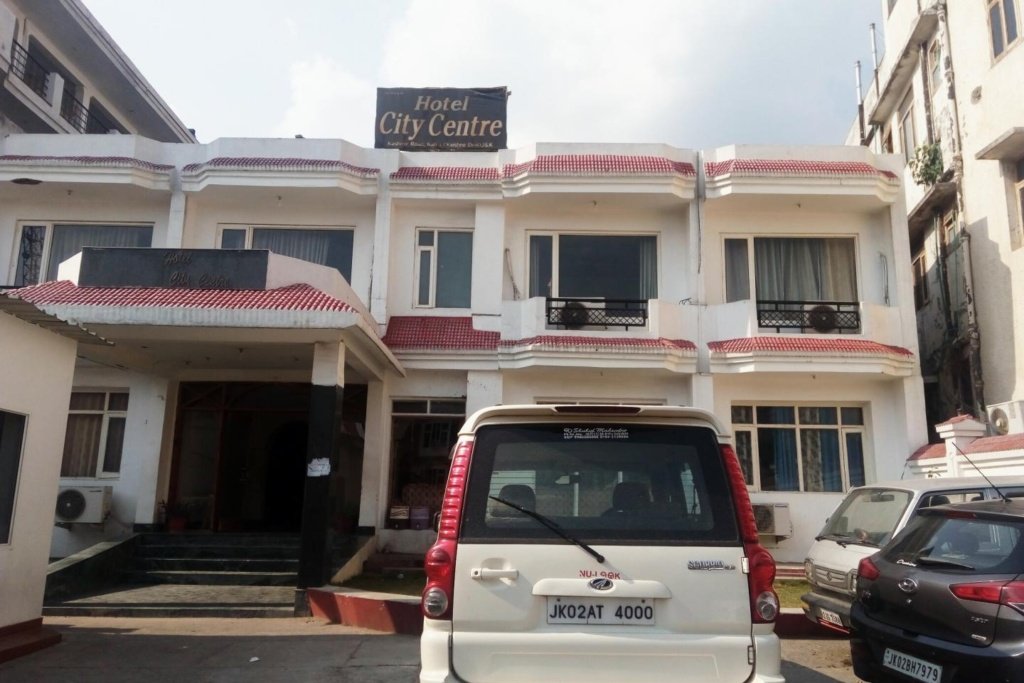
In the City Center, you’ll find shops where you can outfit your trip as well as restaurants. This is a central hub of activity near Vaishno Devi, which makes it that much easier to plan ahead!
The Katra bazaar is the must-visit shopping area in Minikatras. It’s a plethora of shops, delicious food, and dazzling handicrafts.
- Timing to explore : All the day
- Distance : Walkable distance from Vaishno Devi
9. Sanasar Lake Information
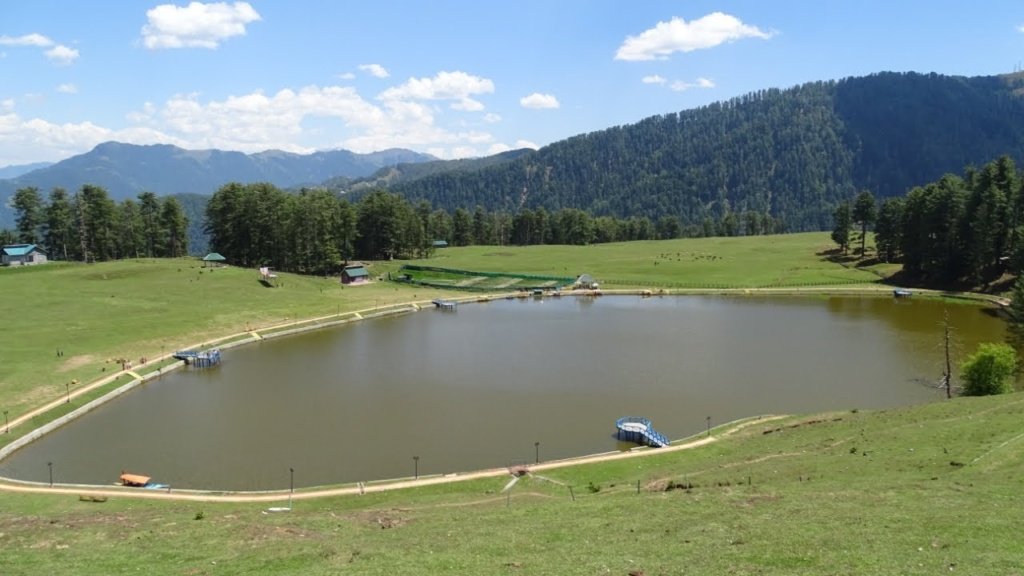
As one of the most beautiful tourist place near vaishno devi, the Sanasar Lake is located around 20 kilometres away from Patnitop. The route from Patnitop to the lake starts at Natha Top, which provides a stunning view during the winter. This is an area popular for skiing, paragliding, and other recreational activities.
On the route, you’ll pass by beautiful natural scenic views, such as green grassy landscapes with pine trees and a glistening lake in the middle. Horseback riding is also highly popular among visitors, who can ride and dine around the lake as a family picnic. Be sure to ask for a low price on horseback rides; they first charge a high fee by default. There are also an echo point here so listen out for the sound of your voice reverberating across the heavenly mountain range. Less reading
Patnitop has a golf course and a unique resort on the western side of the mountain.
- Timing to explore : Daytime
- How to reach : 20 kilometres from Patnitop
10. Ranbireshwar Temple, Katra, Jammu and Kashmir
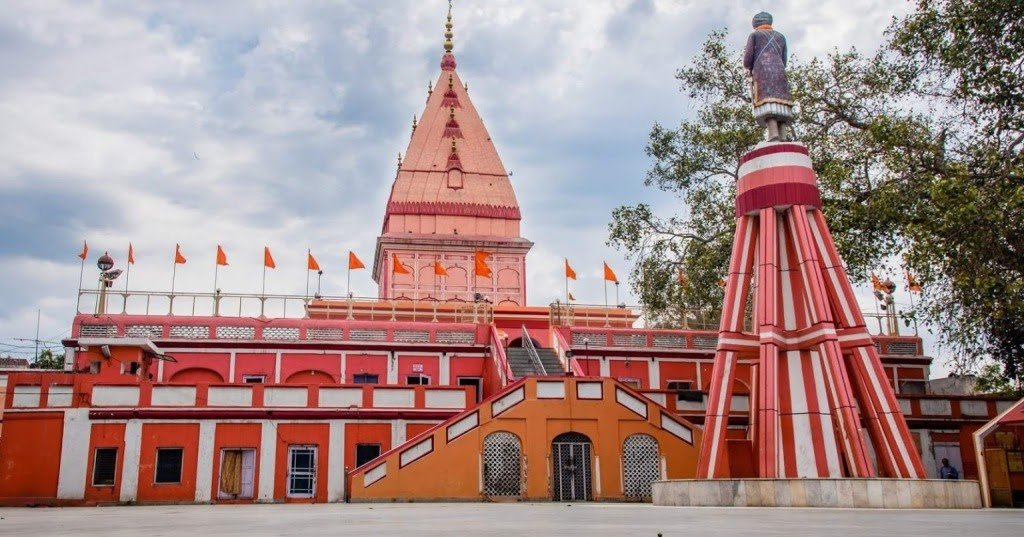
places to visit in jammu near vaishno devi, the Ranbireshwar temple has 12 Shiva jyotirlinga and is one of the popular tourist attractions for a visit to Vaishno Devi. In 1884, Maharaja Ranbir Singh helped design the temple. The temple is visited throughout the year by Hindus who come to offer their prayers and seek Lord Shiva’s blessings.
Years before the arrival of the British in India, many Hindus came together in Jammu to celebrate devotional holidays and seek spiritual guidance from Lord Shiva. The Deccan festival of Makar Sankranti is celebrated every year, at which time one can also delight in the other celebrations that are hosted by citizens of Jammu.
- Timing to explore : Daytime
- How to reach : Distances from Ranbireshwar and Jammu Airport is 7.7 KM & Jammu Railway Station : 5.4 KM. Katra : 42.1 KM
11. Mahamaya Temple
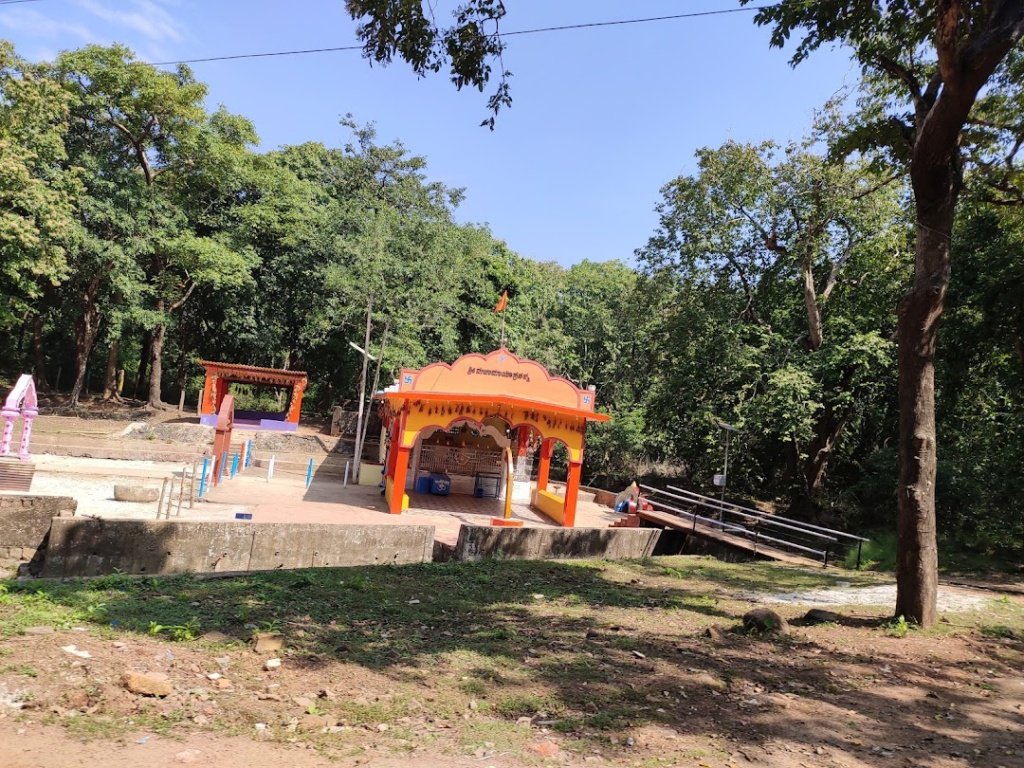
The Mahamaya Temple is a temple dedicated to Lakshmi and Saraswati in Ratanpur, Bilaspur, India. It is one of the many Shakti Peethas, or Hindu shrines, distributed throughout India. Ratanpur is a small city with several temples and ponds around 25 kilometres away from Bilaspur in Chhattisgarh (modern Chhattisgarh state). Kosaleswari, the presiding deity of Daksin Kosal area in ancient times, is also known as Goddess Mahamaya.
An ancient temple is dedicated to the Goddess Mahamaya and was constructed during the 12th and 13th centuries by the Kalachuris. According to mythology, King Ratnadeva first saw Goddess Kali in this area.
The temple was originally dedicated to three goddesses: Maha Kali, Maha Lakshmi, and Maha Saraswati. Later, king Bahar Sai constructed a new (current) temple for goddess Maha Lakshmi and goddess Maha Saraswati. This temple was constructed in the year 1552, during the vikram samvat (1492 AD). Near the temple, there are ponds. Within the site, there are additional Shiva and Hanuman temples. The architecture department has refurbished the temple. The temple is located in Ratanpur, Chhattisgarh.
- Timing to explore : Daytime
- How to reach : Mahamaya temple is at Ratanpur, 25 km from headquarters Bilaspur.
12. Vaishnav Devi Helicopter Yatra
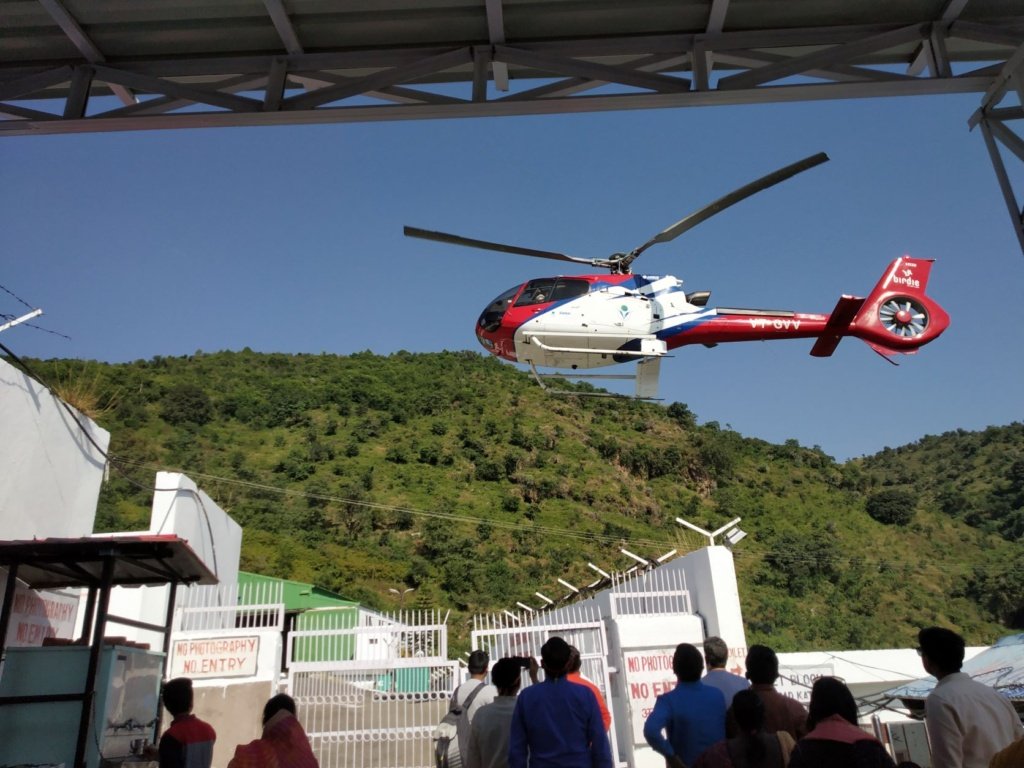
From Katra, the starting site of the Vaishno Devi Yatra, you can take a helicopter to reach Sanjhichatt. From Katra Mosque to the helipad on Udhampur Road, the flight takes around 8 minutes and travelers can have 5-6 passengers on board.
To get to the Vaishno Devi Bhawan, it takes 30 minutes via a helicopter or 2.6 kilometres overland by foot. Ride with the palkis (horses), ponies, and porters that transport pilgrims to the temple. Taxi companies can also take guests there for an additional cost.
Ticket to Vaishno Devi via Helicopter
The cost of a one-way ticket from Katra to Sanjhichhat or vice versa is INR 1730 per person. The cost of a one-way ticket from Katra to Sanjhichhat is INR 3460. Children under the age of two are transported for free and must travel in the lap of an adult.
Other than this, there is no commission or processing fee. The traveller is charged any applicable taxes at the corresponding place in Katra / Sanjichhat.
The official website can be used to book a helicopter for the Vaishno Devi yatra.
Tickets for helicopters are also available through private websites & tour operators.
In the event of an age-related dispute, valid identification may be required.
- Timing to explore : Darshan hours are 5:00 a.m. to 12:00 p.m. and 4:00 p.m. to 9:00 p.m
- How to reach. 2 kilometres from Katra Bus Station. You can board on rickshaw and reach the destination
13. Shopping at Katra Main Bazaar
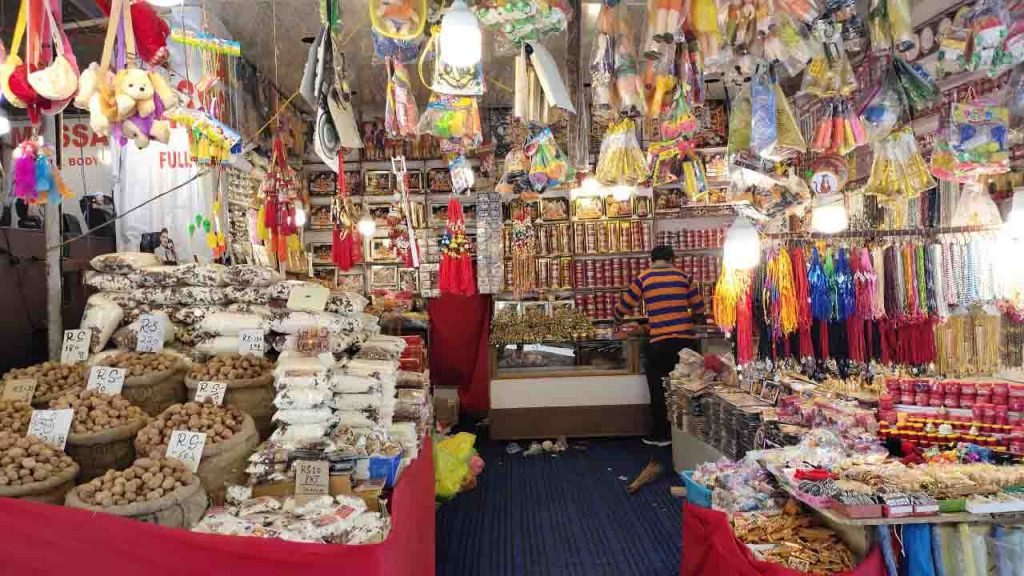
This place is traditionally known for its venerated shrine, Vaishno, but it also offers some unique shopping deals. Pilgrims donate things like saris, shawls and coins to the goddess when they visit. More popular purchases include bangle bracelets, textiles embroidered with Vaishno Devi’s image or others handcrafted by locals.
One of the places to visit in vaishno devi is Katra Bazaar, where Jammuans can make all of their purchases. Walnuts, almonds, berries, and dried apples are some of the delectable dry fruits available for purchase.
Can be found in abundance in the Sanjhi Chhat market, the holy goddess of textiles is the recipient of traditional textiles and shawls. Traditional products are donated to the temple in Bhawan market.
- Timing to explore : Daytime
- How to reach. The primary retail centre here is the Katra Main Bazaar
14. Ropeway of Vaishno Devi
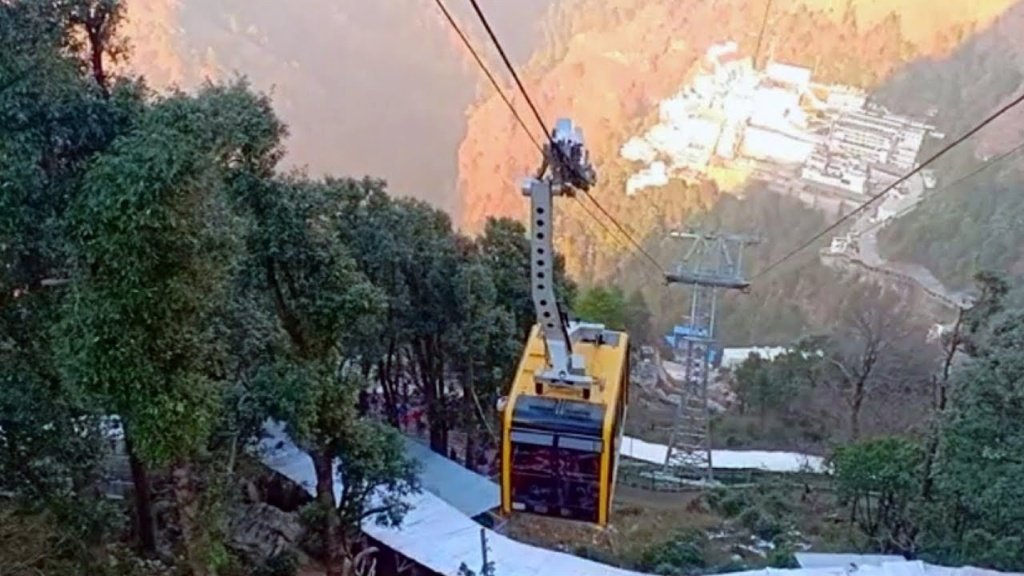
Vaishno Devi Temple is connected to Bhairon Nath Mandir in the famed, 1 km long Ropeway system. The challenge of walking, a one hour hike from Vaishno Devi to Bhairon Nath, can be managed with the ropeway. It transports 46 people at a time and only goes in one direction. After 300 metres of walking down from the drop-off point at Vaishno Devi Temple, the view from Bhairon Nath Mandir is breathtaking.
This town, Mata Vaishnodevi, is located in the Trikuta Hills and is about 14 kilometers from Katara at a height of 1530 meters. There’s brilliant clouds and thinning air in this beautiful shrine, with spirituality and livelyness remaining in the surrounding environment.
Thousands of people climb up to the Vaishno Devi temple each year to pray for luck, blessings and protection from evil. This pilgrimage site is one of 108 Shakti Peethas that reflect the many aspects of Durga, a Divine Goddess in Hindu mythology. The trek can be difficult for children and the elderly since it spans over 13 kilometers upwards. Various sellers support those on their journey by providing horses and palanquins (or sedan chairs) at different points along the way. The route is well-paved but some vendors sell refreshments and food along the way.
- Timing to explore : 8:00 AM – 5:00 PM
- How to reach.The Vaishno Devi Mandir is about 300 metres from the drop-off spot.
15. Salal Dam
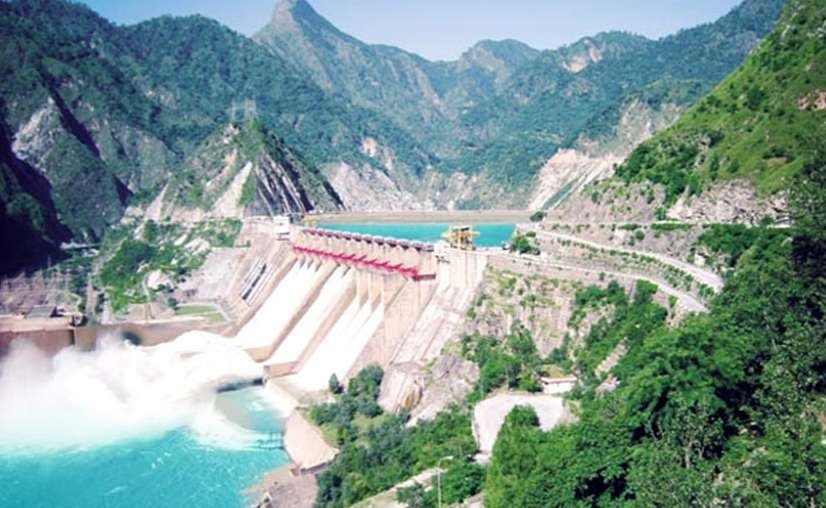
Salal Dam is a run-of-river hydroelectric facility on the Chenab River in J & K’s Reasi region. It was India’s first hydroelectric project under the terms of the Indus Water Treaty that it negotiated with Pakistan in 1978, followed by another agreement made in 1987 to alter its design significantly, including lowering its height and deleting set working pool to make it less efficient. Although the dam had been designed properly, it still took only five years for silt to clog up its works and bring it down to 57% capacity.
This project is set in Salal, a hamlet in Reasi District, a few kilometres south of Matlot and the site of the river which bends south. The Marala Headworks and the Marala–Ravi Link Canal are both downstream from it and transport water to Pakistani Punjab.
In 1920, the Salal concept was created. Governments of J&K (India) began construction on a project in 1961 and a design was ready by 1968. The Central Hydroelectric Programme Control Board (under Ministry of Infrastructure and Power, Government of India) began construction in 1970. The project design included a two-stage powerplant that could generate 690 MW of electricity using the dam’s head.
- Timing to explore : Daytime
- How to reach : Pakistan lies at 73 kilometres downstream.
16. Devi Pindi Mata Mandir
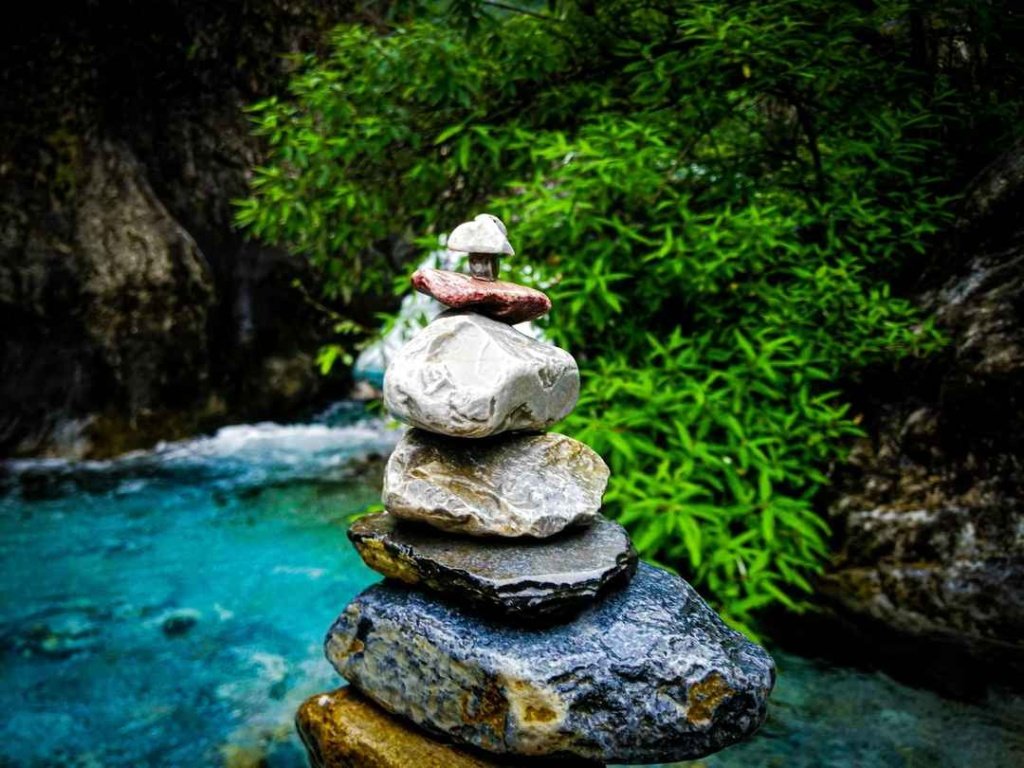
A Hindu temple known as Devi Pindi is found in the mountainous region of Jammu and Kashmir’s Reasi district. This temple is around 40 kilometers from Jammu city and can be reached in a taxi or by car from this area.
The Devi Pindi temple is another site you can pay a visit to while on the spiritual and cultural excursion of the Hindu Kush Range. You can leave from Jammu by 11:30 a.m. to arrive at our destination of 12:45 p.m., where you’ll find the road to be good, smooth, and enjoyable to ride on.
Because the last five to seven kilometers are a little difficult, I recommend that only experienced drivers travel part of the way. I was stunned by the beauty as I arrived at the walking route’s starting location. I imagined myself in Jibhi, with stunningly beautiful mountains, sparse human activity, and tiny streams transporting nearly turquoise water. Oh what an incredible sensation it was to be there and know that I would be with them for the next few hours. We began our walk about 1 pm, which is advertised as a two and a half kilometer hike but believe me when I say that it is much longer. This is one unique hike where just few nomads live in the wilderness until hikers pass by to help on their journey.
I recommend only experienced drivers travel the last part of the hike that is 5-7 kilometres long. I was astonished by the splendour as I finally reached the starting location. I imagined myself in Jibhi, with the same beautiful green mountains and sparse human activity, and small streams carrying aqua water. It was an incredible sensation to be there and know that I would be spending almost four hours there! We began our walk at 1:00 p.m., which is advertised as a 2.5-kilometer hike, but believe me when I say it’s much longer! This unique walk has just a few nomads living in this wilderness to assist hikers on their journey.
- Timing to explore : Daytime
- How to reach It is around 40 Kilometres from Jammu city. Public Transport is the best option.

